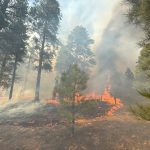
Nez: ARPA is once in a lifetime opportunity
WINDOW ROCK
To start the Navajo Nation Council’s summer session, President Jonathan Nez on Monday gave the state of the Nation address, emphasizing that the American Rescue Plan Act is a once in a lifetime opportunity.
It can be used to invest in water, electricity, broadband and other infrastructure improvements and developments.
Nez said he and Vice President Myron Lizer travelled throughout the Nation to meet with chapter officials and to find out what the community priorities are and what ARPA funding can do to meet those needs.
Navajo Nation was given $1.8 billion of ARPA funding thus far.
“One point eight billion isn’t enough to build our entire Nation, or to make everyone happy, but we can help to build our foundation and prepare it for our children and theirs to come,” Nez said. “We have to think beyond our immediate situation and prepare for what challenges and possible future pandemics may occur.”
Regarding drought and the need for water, Nez acknowledged depleting wells, drying ponds and lakes. He said ARPA funds can be invested in water development, conservation and infrastructure.
Nez also noted that under Chief of Staff Paulson Chaco, the administration’s infrastructure team is vetting projects to develop a list that includes around 9,000 projects at a cost of over $20 billion.
The Division of Community Development also received 558 projects from chapters for ARPA funds, most of which prioritize bathroom additions for families.
Delegate Raymond Smith mentioned the drought in a question about CKP Insurance, LLC. The Department of Agriculture applied for insurance coverage through the U.S. Department of Agriculture’s Pasture, Rangeland, Forage Insurance Program to help avoid the risk of forage loss because of no rains.
Drought money
In 2016, Council adopted the Síhasin Fund Pasture Rangeland and Forage Expenditure Plan, which reserved $20 million from the Síhasin Fund for insurance premiums to the USDA through CKP.
“Chapters are asking when will this be released and when can we utilize that?” Smith said. “Aspects about using that drought money is because we have severe drought here.”
The controller’s office and management and budget questioned a unanimously approved – and hardly debated – legislation by Council that approved funds for hay, grain and livestock feed for the 110 chapters, according to Nez.
These funds were for distribution to ranchers and livestock owners through the Sihasin Fund Pasture Range and Forage Expenditure Plan.
Housing development
On housing, Nez said he is working with Council to establish manufacturing facilities in different areas of the Nation. Nez said working together with Council to allocate funds through ARPA for these facilities cut down expenses to build hogan-style homes.
Veterans Administration Director James Zwierlein said the Nation has developed partnerships with organizations that specialize in housing development.
Regional manufacturing facilities that use Navajo resources and employ Navajo workers in construction lowers costs and can produce more homes. But Council support is needed.
These homes can be the solution to house not only veterans but other Navajos as well because the Navajo Housing Authority continues to fall short in providing homes for the people, said Delegate Vince James.
“I think it’s time we go back to Congress and tell them not to overfund NHA,” said James. “We did receive a report from NHA indicating they only built 14 new homes this year. Maybe its time to relinquish those funds from NHA.”
Delegate Edmund Yazzie asked Nez if the Council abolished NHA’s status as the Tribally Designated Housing Entity, which enables NHA to receive funds under the Native American Housing and Self-Determination Act.
“We are right now in the process of reevaluating Navajo Housing Authority,” Nez said. “We have to make sure our board is full.”
Lizer chimed in, acknowledging past mismanagement by NHA and failed projects resulting in “ a lot of time wasted.”
But, Lizer said, with rural land and rugged roads, it’s going to always be costly to get projects ready for new homes.
“Ninety percent of our region belongs to the U.S. government,” Lizer said. “A lot of that is free and clear. A lot of that is in trust with BIA, so we have this multilevel of hierarchy of oversight and bottleneck.
“You have to add environmental, archeological and other permits that are required,” he said. “We got only less than one percent that is actually free to develop.”
Road projects
Regarding roads, Nez said they met with U.S. Secretary of Transportation Pete Buttigieg and Deputy Assistant Secretary for Tribal Affairs Arlando Teller, to present the policy changes and the unnecessary red tape that delays road improvement projects and maintenance.
The Nez-Lizer administration developed a transportation white paper that outlines specific policy changes. The Nation should not have to wait years for right-of-way clearances and approvals from the federal government to move forward with road projects.
This “white paper” has been a contentious subject for delegates, some even asking Navajo Washington Office director Santee Lewis to resign.
Delegate Eugenia Charles Newton said questions include whether Nez had the right to present this “white paper” to the federal government without “knowledge and consent of Council.”
“I, myself, did ask if we can bring up ethics charges against Santee Lewis for submitting this white paper on behalf of the Navajo Nation,” Newton said. “When it was never even submitted to the council for consideration.”
Nez said the white paper listed obvious red-tape issues to “make sure projects get done quickly.”
“That’s been of multiple administrations,” he said. “Until now we took it upon ourselves to recommend those changes from the federal government.
“With Washington office doing an outstanding job there, we can’t wait and put everything on hold,” he said. “We only have a year to go before the midterm elections, for these changes to occur.”
Uranium mining compensation
Nez said testimony was presented in April before the U.S. Subcommittee on the Constitution, Civil Rights, and Civil Liberties, in support of Navajo people who continue to experience long-term health impacts due to radioactive contamination and exposure from abandoned uranium mines.
He said the Nez-Lizer administration supports the Navajo Uranium Radiation Victims Committee, and continues to work for Congress to extend the Radiation and Exposure Compensation Program beyond 2022.
The program should include all downwinders, expand coverage to include post-1971 workers and families, expand eligibility to include additional categories of workers and types of cancers, and increase the compensation cap to a minimum of $200,000 per individual.
“We need this bill to be reauthorized,” said Delegate Amber Crotty.
Delegate Thomas Walker Jr. asked that a message be sent to U.S. Environmental Protection Agency’s District 9 to hire Navajo workers when cleanup and remedial work begins on abandoned uranium mines.
Nez said he informed Navajo EPA director Valinda Shirley to draft a letter to advocate that managers be Navajo and they will send that to U.S. EPA.
“We will definitely advocate that Navajo be a part of cleanup here on Navajo Nation,” said Nez.
Council approved the state of the Nation report with a vote of 17-5.
As a public service, the Navajo Times is making all coverage of the coronavirus pandemic fully available on its website. Please support the Times by subscribing.
How to protect yourself and others.
Why masks work. Which masks are best.
Resources for coronavirus assistance



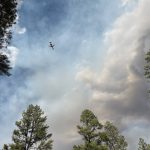
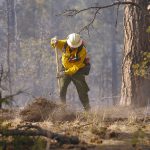
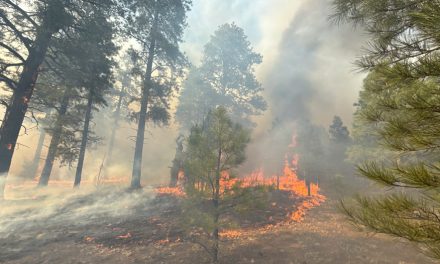
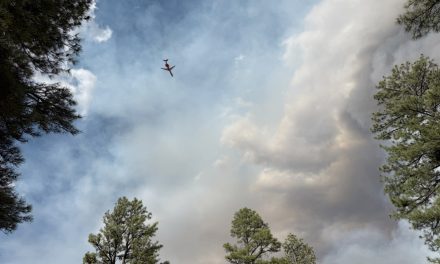



 Highway 264,
Highway 264, I-40, WB @ Winslow
I-40, WB @ Winslow